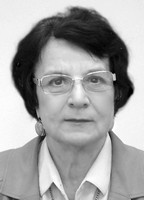Adaptation of sporty students to academic load under fatigue and neuropsychic strain
Фотографии:
ˑ:
Teoriya i praktika fizicheskoy kultury №4 2017, pp.55-57
Professor, PhD T.V. Popova1
PhD, doctoral student Y. I. Koryukalov1
PhD, Associate professor O.G. Kourova1
Dr.Biol. I. P. Dovbiy1
1South Ural State University, Chelyabinsk
The paper studies psychophysiological functions of university students that major in management and combine studies and sports.
62 students aged between 17 and 21 volunteered to take part in the research. The subjects formed four groups, groups 1 and 2 being made up of students who did not do any sport, the total of 32 students, 17 females and 15 males, while groups 3 and 4 were made up of I degree athletes and Candidate Masters of Sport of various specializations and qualifications, the total of 30 students, 15 females and 15 males, their athletic experience ranging from 3 to 5 years. Static hand fatigue measurements were taken to assess fatigue in the subjects during their academic activities. Analyzed were hand static fatigue, blood pressure, and heart rate variability according to Dr. Baevsky procedure in the students both while at rest and during local muscle work tests, and assessed their neuropsychic strain. It has been proved that adaptive changes in both sporty and unfit students involve onset of fatigue and emotional strain, their levels being considerably lower in the sporty students than in the unfit ones. We have also established criteria for description of fatigue and neurophysic strain levels in students.
Keywords: university students,athletes, fatigue, neuropsychic strain, adaptation.
References
- Alferova T.V. Vozrastnyie osobennosti reaktsii krovoobrashcheniya na lokalnuyu rabotu myshts staticheskogo i dinamicheskogo haraktera [Age characteristics of the reaction of blood circulation to the local operation of the static and the dynamic nature of the muscle]. Uspekhi fiziologicheskih nauk, 1988, vol. 19, no. 4, pp. 54-74.
- Baevskiy R.M., Kukushkin Y.A. Metodiki otsenki funktsionalnogo sostoyaniya organizma cheloveka. [Тechniques assess the functional state of the human body]. Meditsina truda i promyshlennaya ekologiya [Occupational Medicine and Industrial Ecology]. 1995, no. 3, pp. 30-34.
- Bykov V.S., Mikhailova S.V., Nikiforov S.A. Fizicheskoe samovospitanie uchashcheysya molodezhi [Physical self-education of young students]. Teoriya i praktika fiz. kultury, 2006, no. 8, pp. 13-16.
- Gorst N.A., Gorst V.R., Rudenko I.O. Uroven adaptatsii serdechno-sosudistoy sistemy v yunosheskom vozraste i disregulyatsionnye protsessy [Level of adaptation of cardiovascular system in young adulthood and disregulatory processes]. Almanakh. Novye issledovaniya, 2004, no. 1-2, pp. 133-134.
- Zhuravishkina E.G. Nekotorye aspekty uchebnoy adaptatsii studentov [Some aspects of students' adaptation to studies]. Sechenov Russian Journal of Physiology, 2004, vol.90, no. 8, pp. 367-368.
- Kabanov S.A., Lichagina S.A., Aminov A.S. Fiziologicheskie i psikhologicheskie problemy otsenochnoy deyatelnosti, adaptatsii, stressa i povedeniya cheloveka (sotsialno-fiziologicheskie, psikhologo-pedagogicheskie i povedencheskie aspekty) [Physiological and psychological problems of valuation activities, adaptation, stress and human behavior (socio-physiological, psychological- pedagogical and behavioral aspects)]. Chelyabinsk: South Ural State University Publ., 2005,183p.
- Nemchin T.A. Sostoyaniya nervno-psikhicheskogo napryazheniya [States of mental tension]. Leningrad: LSU publ., 1983, 168 p.
- Sapogova N.V., Petrova L.G. Issledovanie funktsionalnykh vozmozhnostey TsNS u devushek 17-18 let s razlichnym urovnem staticheskoy vynoslivosti [The study of functional central nervous system capacities in girls aged 17-18 years with different levels of static endurance]. I s'ezd fiziologov SNG: nauchnye trudy [I Congress of Physiologists of CIS: scientific papers]. Sochi - Dagomys, 2005. Moscow: Meditsina, Zdorovie. Sochi, 2005, Vol. 1, p.52.



 Журнал "THEORY AND PRACTICE
Журнал "THEORY AND PRACTICE